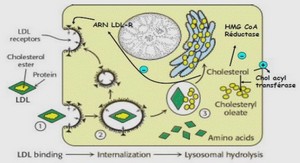Experiment metabolisation kinetics of thiamethoxam
Effects of thiamethoxam on survival and syrup intake
Survival of the honeybees was not affected by pesticide exposure. Kaplan-Meier curves of control and of 0.25 ng/bee/day thiamethoxam-fed bees did not differ (p=1; day 10 mortality rates: respectively 2.9% and 2.0%, data not shown). Mean daily syrup intake over the course of the experiment was significantly higher (p<0.01; Fig. 1) for thiamethoxam fed bees (mean: 36 µL/bee; standard deviation <0.01) than for control bees (mean: 28 µL/bee; standard deviation <0.01). According to the intake volume mean, the bees were exposed to 0.36 ng/bee/day instead of the expected 0.25 ng/bee/day3.1.2. Metabolisation of thiamethoxam into clothianidin
Metabolisation of thiamethoxam into clothianidin
Levels for both neonicotinoids (thiamethoxam and clothianidin) were under the limit of detection (LOD, 0.015 ng/bee) in control bees over the course of the experiment (Fig. 2). Thiamethoxam levels reached 0.15 ng/bee one day after the beginning of exposure and remained stable until day 10. Then, this level dropped to around 0.10 ng/bee on day 12, 15 and 18. In contrast, clothianidin levels increased steadily throughout the experiment, from under 0.05 ng/bee after one day of exposure to almost 0.40 ng/bee after 18 days (Fig. 2). Clothianidin seems to accumulate in the tested honeybees.
Comparison of thiamethoxam levels in whole and dissected bees
Thiamethoxam levels between whole bees and dissected bees (without the rectum) after 18 days of chronic exposure did not differ significantly (p=0.23), but clothianidin levels were significantly higher in whole bees than in dissected bees (p=0.04; Fig. 3), suggesting accumulation in the rectum.
Experiment 2: CBPVthiamethoxam coexposure
Effect of co-exposure on mortality
Survival rates were determined using the Kaplan-Meier estimate (Fig. 4). These rates were distributed in four significantly different groups. The first group, (a), with the highest survival rates (>80% live bees after 10 days of experiment) was composed of control bees and bees fed with 2.5 ng/bee/day of thiamethoxam. The second group, (b), with lower survival rates, was composed of bees that were only in contact with CBPV-infected bees (69% live bees after 10 days), and bees that were co-exposed to CBPV-infected bees and 2.5 ng/bee/day of thiamethoxam (58% live bees after 10 days). The third group, (c), with yet a lower survival rate, was composed of bees that were fed with 5.0 ng/bee/day of thiamethoxam (45% live bees after 10 days). Finally, the group with the lowest survival rate, (d) (4.6% live bees after 10 days) was composed of bees that were co-exposed to both CBPV-infected bees and 5.0 ng/bee/day of thiamethoxam. A significant effect of co-exposure on mortality was found only at the highest dose of thiamethoxam after up to 8 days of co-exposure (p<0.01; Fig. 5). The survival rate of bees coexposed to both CBPV and 2.5 ng/bee/day of thiamethoxam was not significantly different from bees that were only exposed to CBPV-infected bees (p>0.05). The mortality in the co-exposure condition exceeded what would be expected from an additive effect between CBPV and 5.0 ng/bee/day of thiamethoxam (i.e., the effect was higher than the sum of the effects observed in groups exposed to each of the stressors alone). The observed mortality (day 8: p<0.01 [a=10.85]; day 9: p<0.01 [a=11.49]; day 10: p=0.01 [a=10.58]) was much higher than the expected mortality (χ² table with 1 df, a=6.635 [p=0.01] or a=10.828 [p<0.01]). This demonstrating that there was a synergistic effect between the CBPV and thiamethoxam at the dose of 5.0 ng/bee/day.
Viral loads
The distribution of the CBPV loads is shown in Figure 6 and 7 Viral loads in the unmarked honeybees that were alive and sacrificed on sampling (here named “live-sampled”) differed significantly between two experimental groups: exposed and not exposed to the virus (p<0.01), indicating the success of our transmission method (Fig. 6). As expected, groups composed of control bees and bees exposed to the pesticide showed the lowest viral loads, mostly under or around the real-time PCR LOQ. Contact with CBPV-infected bees induced virus contamination in the tested bees (unmarked bees), regardless of pesticide exposure. There was no significant effect of co-exposure on CBPV viral loads in live-sampled honeybees (p=0.13), but a tendency can be seen for the honeybees co-exposed to 5 ng of thiamethoxam and CBPV. Our transmission method doesn’t allow us to control the virus doses, and this exacerbates individual variability. The only significant effect that was observable in dead bees was on day 5 and 10, where dead bees co-exposed to CBPV and 2.5 ng/bee/day of thiamethoxam had higher CBPV loads than live-sampled bees in the same condition (p<0.01; Fig. 7).



